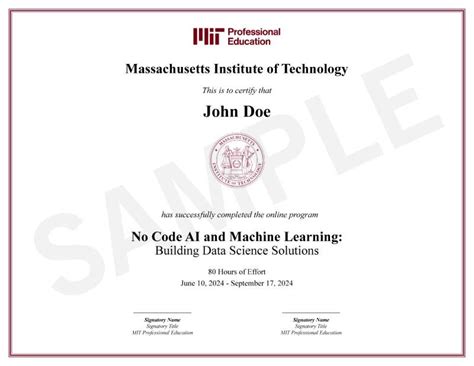No-code machine learning (ML) has emerged as a revolutionary approach, democratizing access to artificial intelligence (AI) and enabling individuals without extensive coding backgrounds to leverage the power of ML. This paradigm shift is largely driven by the development of user-friendly, visually intuitive platforms that simplify the process of building, deploying, and managing ML models. As the demand for AI and ML solutions continues to grow across industries, the importance of no-code ML cannot be overstated. In this context, understanding and applying effective no-code ML strategies becomes crucial for both professionals and organizations seeking to harness the full potential of AI without being hindered by coding complexities.
Introduction to No-Code ML

No-code ML platforms offer a drag-and-drop interface or a graphical user interface (GUI) where users can select data sources, choose algorithms, and configure model parameters without writing a single line of code. This accessibility opens up ML to a broader audience, including business analysts, data scientists who want to prototype quickly, and even non-technical stakeholders who wish to explore the capabilities of AI. However, the success of no-code ML projects depends on several key factors, including the quality of the data, the selection of the appropriate algorithm, and the ability to interpret results effectively.
Key Points
- Data Quality Matters: Ensuring that your dataset is clean, relevant, and adequately sized is crucial for the success of any ML project, including those using no-code tools.
- Algorithm Selection: Choosing the right algorithm for your problem is vital. No-code platforms often provide guidance, but understanding the basics of different algorithms can significantly improve your outcomes.
- Model Interpretability: Being able to understand why your model is making certain predictions is essential for trust and decision-making. Look for no-code tools that provide interpretable results.
- Continuous Learning: ML is a rapidly evolving field. Staying updated with the latest developments and best practices, even in a no-code environment, is key to achieving long-term success.
- Ethical Considerations: As with any ML project, ethical considerations such as bias, privacy, and transparency must be carefully managed in no-code ML projects to ensure responsible AI deployment.
Tip 1: Focus on Data Preparation
Data preparation is often cited as one of the most time-consuming aspects of ML projects. No-code ML platforms simplify this process by offering automated data preprocessing tools, such as data cleaning, feature scaling, and encoding categorical variables. However, it’s essential to understand the basics of data preparation to effectively utilize these tools. For instance, knowing when to apply normalization versus standardization or how to handle missing values can significantly impact model performance.
Tip 2: Select the Right Algorithm
The choice of algorithm depends on the nature of the problem you’re trying to solve. No-code platforms usually provide a range of algorithms for classification, regression, clustering, and more, along with recommendations based on the characteristics of your dataset. However, having a basic understanding of how different algorithms work (e.g., decision trees, random forests, support vector machines) can help you make informed decisions and fine-tune your model for better performance.
Tip 3: Iterate and Refine Your Model
ML model development is an iterative process. Initial results may not always meet expectations, and refinement is often necessary. No-code platforms facilitate this process by allowing quick adjustments to model parameters, feature selection, and even algorithm switching without requiring extensive re-coding. It’s crucial to monitor performance metrics (such as accuracy, precision, recall, F1 score for classification problems, and mean squared error or R-squared for regression problems) and adjust your strategy accordingly.
| Performance Metric | Description |
|---|---|
| Accuracy | The proportion of correctly classified instances out of all instances in the dataset. |
| Precision | The ratio of true positives to the sum of true positives and false positives. |
| Recall | The ratio of true positives to the sum of true positives and false negatives. |
| F1 Score | The harmonic mean of precision and recall, providing a balanced measure of both. |

Tip 4: Consider Model Explainability
Model explainability is becoming increasingly important as ML models are used in more critical decision-making processes. While no-code platforms may not offer the same level of transparency as custom-built models, many provide tools for model interpretability, such as feature importance scores or partial dependence plots. Understanding how your model arrives at its predictions can help build trust and identify potential biases or areas for improvement.
Tip 5: Stay Updated with Best Practices
The field of ML is rapidly evolving, with new techniques, algorithms, and best practices emerging regularly. Staying updated with the latest developments can help you leverage the most effective strategies for your no-code ML projects. This includes following industry leaders, participating in forums and communities, and engaging with educational content that focuses on the practical application of ML principles.
What are the primary benefits of using no-code ML platforms?
+The primary benefits include rapid development and deployment of ML models, reduced need for extensive coding knowledge, and increased accessibility for non-technical stakeholders.
How do I choose the right no-code ML platform for my project?
+Consider factors such as the type of problem you're trying to solve, the complexity of your dataset, the level of model interpretability you need, and the scalability requirements of your project.
Can no-code ML replace traditional coding approaches entirely?
+While no-code ML is highly versatile and powerful, there are cases where traditional coding may be preferable or necessary, such as in highly customized or complex projects. No-code ML is best seen as a complementary tool that expands the possibilities for ML adoption.
In conclusion, no-code ML represents a significant advancement in making machine learning more accessible and user-friendly. By focusing on data quality, algorithm selection, model interpretability, continuous learning, and ethical considerations, individuals and organizations can unlock the full potential of no-code ML. As this field continues to evolve, embracing these strategies will be key to achieving success and driving innovation in the era of AI.
